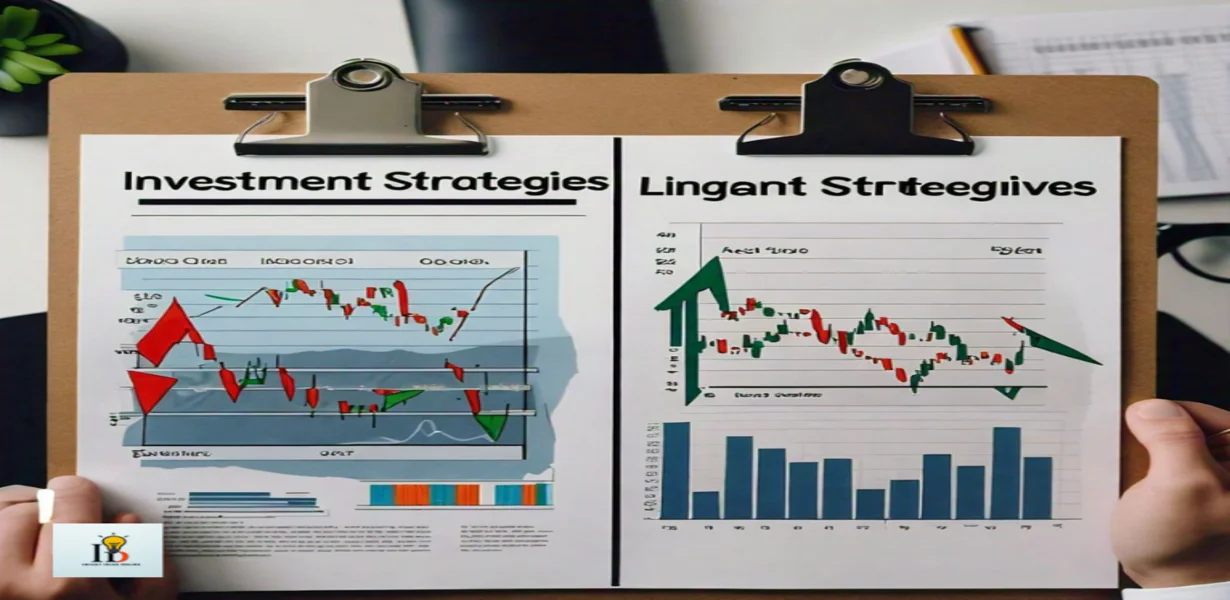Long-Term vs. Short-Term Investment Strategies: Which is Right for You?
Investing can be a powerful way to grow wealth, but choosing the right strategy is crucial for achieving your financial goals. Two popular investment strategies are long-term and short-term investments. In this blog post, we will explore the differences between these strategies, their advantages and disadvantages, and help you decide which approach might be best for you.
Understanding Investment Strategies
Before diving into the specifics, it’s important to understand what long-term and short-term investment strategies entail.
What is Long-Term Investment Strategies
Long-term investing involves buying and holding investments for an extended period, usually several years or even decades. The idea is to benefit from the overall investment growth over time.
Key Characteristics of Long-Term Investment Strategies:
- Duration: Investments are held for over a year, often for many years.
- Focus: Emphasis on the fundamental value of investments.
- Objective: Capital appreciation, or Growth in the value of the investment.
What is Short-Term Investing?
Short-term investing focuses on making profits within a relatively brief period, typically less than a year. This approach often involves more frequent trading and reacting to market fluctuations.
Key Characteristics of Short-Term Investment Strategies:
- Duration: Investments are held for less than a year.
- Focus: Emphasis on market trends and timing.
- Objective: Quick returns, often through frequent buying and selling.
Long-Term Investment Strategies

Long-term investing is often recommended for those with the patience and discipline to wait for their investments to grow. Here are some popular long-term investment strategies:
1. Buy and Hold
The buy-and-hold strategy involves purchasing and holding securities for a long period, regardless of market fluctuations. This strategy is based on the belief that the market will generally increase in value over time.
Advantages:
- Simplicity Requires less time and effort compared to more active strategies.
- Cost-Efficient: Lower transaction costs and fewer fees.
- Tax Benefits: Long-term capital gains are usually taxed lower than short-term gains.
Disadvantages:
- Market Risk: Your investment’s value may decline during market downturns.
- Lack of Flexibility: Adapting quickly to market changes might be challenging.
2. Dividend Investing
Dividend investing focuses on stocks that pay regular dividends. These dividends can provide a steady income stream and contribute to overall returns.
Advantages:
- Regular Income: Provides a source of income through dividends.
- Compounding Growth: Reinvesting dividends can accelerate Growth.
- Stability: Dividend-paying stocks are often from established companies.
Disadvantages:
- Dividend Cuts: Companies can reduce or eliminate dividends.
- Lower Growth Potential: Dividend stocks may not appreciate as much as growth stocks.
3. Index Investing
Index investing involves buying a broad market index, such as the S&P 500. This strategy aims to replicate the performance of a particular index rather than trying to beat it.
Advantages:
- Diversification: Reduces risk by spreading investments across many stocks.
- Lower Costs: Generally, fees are lower than actively managed funds.
- Performance: Historically, index funds have performed well over the long term.
Disadvantages:
- Market Risk: Exposure to market downturns.
- No Outperformance: You will not outperform the index.
Short-Term Investment Strategies

Short-term investing is suited for those who want to capitalize on market fluctuations and are comfortable with higher risk. Here are some popular short-term investment strategies:
1. Day Trading
Day trading involves buying and selling financial instruments within the same trading day. Day traders aim to profit from short-term price movements.
Advantages:
- High Potential Returns: Opportunities for substantial short-term gains.
- Flexibility: Ability to react quickly to market movements.
Disadvantages:
- High Risk: Potential for significant losses due to market volatility.
- Time-Consuming: Requires constant monitoring and analysis.
- Transaction Costs: Frequent trades can result in high fees.
2. Swing Trading
Swing trading involves holding stocks or other securities for a few days to weeks to profit from expected short-term price movements.
Advantages:
- Less Stressful than Day Trading: Lower frequency of trades.
- Potential for Significant Gains: Opportunity to capitalize on market trends.
Disadvantages:
Market Risk: Subject to market volatility and price swings.
Requires Skill: A good understanding of technical analysis is needed.
3. Short-Term Bonds
Short-term bonds are debt securities with maturities of less than three years. They offer lower returns compared to long-term bonds but are considered safer.
Advantages:
- Lower Risk: Less exposure to interest rate fluctuations.
- Predictable Returns: Regular interest payments and principal return.
Disadvantages:
- Lower Returns: Typically lower yields compared to long-term bonds.
- Inflation Risk: Returns may not keep up with inflation.
Choosing the Right Investment Strategies for You
Deciding between long-term and short-term investment strategies depends on various factors, including financial goals, risk tolerance, and investment horizon.
Consider Your Goals
Long-Term Goals: Long-term investing might be more suitable if you save for retirement or a large future expense.
Short-Term Goals: Short-term investing might be more appropriate for goals within a few years, such as buying a house or a car.
Assess Your Risk Tolerance
- Risk-Averse: Long-term investing may be better if you prefer stability and can tolerate fewer fluctuations.
- Risk-Tolerant: If you’re comfortable with market volatility and want the potential for higher returns, short-term investing might appeal to you.
Time Commitment
- Low Time Commitment: Long-term investing generally requires less active management and monitoring.
- High Time Commitment: Short-term investing requires more time and attention, especially day trading.
Conclusion
Both long-term and short-term investment strategies have their unique benefits and drawbacks. Long-term investing is ideal for those looking for stable growth and can’t wait to see their investments mature. Short-term investing suits those comfortable with higher risk and who want to take advantage of market fluctuations for quick returns.
By understanding your financial goals, risk tolerance, and time commitment, you can choose the investment strategy that aligns best with your needs. Remember, the most successful investors often use both methods to balance risk and reward.
Happy investing! If you found this post helpful, please share it with others who might benefit from understanding these investment strategies.

There are additional articles to read.
There are some more articles based on different topics regarding family members and other home organizing issues; if you want to read them, visit the actual home guide, and for more information about investing ideas, visit investing ideas.



